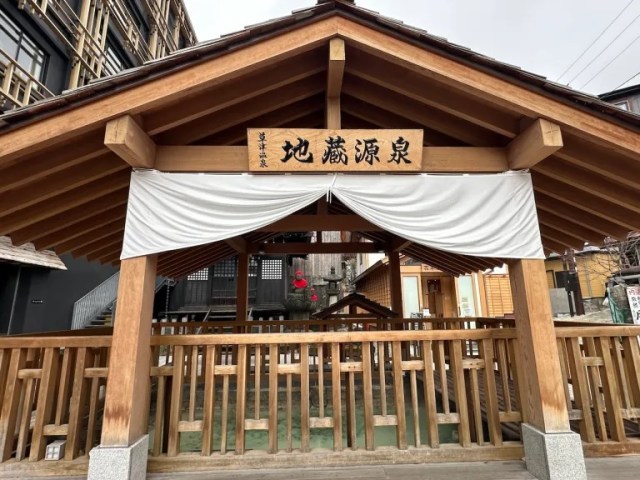
Lots of Japanese hot spring towns have footbaths, but how does a facebath work?
Japan’s hot spring towns offer many different ways to enjoy the relaxing, purportedly health-boosting effects of their geothermally heated water. The most common is to take a full-on bath, either as the guest of a hotel with its own onsen (hot spring) facilities or at a public bath where anyone can take a soak as long as they pay for admission.
In addition, though, sometimes in onsen towns you’ll find ashiyu (“footbaths”) set up around town, often next to the sidewalk, where you can slip off your shoes and soak your feet in the onsen waters free of charge. Sometimes there are even teyu (“handbaths”), basins in which you dip your hand up to the wrist to rejuvenate all the little ligaments and tendons in your palm and fingers.
But recently we heard about an onsen town that has a kaoyu, or “facebath,” and knew it was something we needed to check out for ourselves.
And so it was that our Japanese-language reporter Masanuki Sunakoma headed off to the town of Kusatsu. Located in Gunma Prefecture, about three hours by train and bus north of Tokyo, Kusatsu is one of the top onsen destinations in east Japan, and it’s especially famous for the massive Yubatake “hot spring field” that dominates the center of the town.
▼ Yubatake
The kaoyu is located at the Jizo no Yu plaza, which is about a five-minute walk from the Yubatake.
▼ Yubatake to Jizo no Yu walking route
▼ Along the way you might even spot this marker pointing you towards Jizo no Yu (地蔵の湯).
As he walked, Masanuki tried to imagine just what a kaoyu would be. Was it a hot spring where you’re supposed to stick your face under the water? That seemed like it’d be far from relaxing, since it’d mean either doing a handstand or lying on the ground flat on your belly to get your head in there, and even once you did that, you’d have to hold your breath to keep from drowning. There’s also the fact that, in general, submerging your head in an onsen is considered bad manners in Japan.
Still not sure what was going to be waiting for him, Masanuki arrived at Jizo no Yu, and there it was: the facebath.
▼ 顔湯 = facebath
Despite the promise of a “bath,” though, Masanuki couldn’t see even a drop of hot spring moisture. Instead, there was a sort of box sitting in the plaza, with openings on its top.
Masanuki sauntered over, looked inside, and…
…found the hot spring!
The openings on the facebath box are the tops of long chutes that stretch down to where the water from the hot spring source flows into the neighborhood’s bathhouses.
However, the distance down to the hot water is far longer than anyone’s neck, so how are you supposed to bathe your face?
Easy! Just stick your whole face in the box…
…and you’ll be enveloped in hot spring steam.
This close to the source, onsen water is extremely hot, and that gives it plenty of kinetic energy for the steam to easily rise all the way up to the top of the chute. So instead of dunking your face in the onsen water, you let its moisture float up to you. Because the opening is sort of snug, your head creates a bit of a seal as you insert your face, which keeps the steam from flowing past you too quickly, and it feels incredibly good. By the time it rises to your face, the steam is no longer scalding hot, but still warm enough to open your pores and relax your muscles. It’s like a natural sauna for your face, and we’re pretty sure it’s as great for your skin as it is your mental state.
▼ Fellow reporter Shinomiya was equally enamored of the kaoyu, hopping on the other chute in front of Masanuki’s.
Jizo no Yu’s kaoyu is located in a free-to-access area, as are its footbath and handbath, and all of them can be used free of charge by anyone, 24 hours a day. And don’t worry, we’ll make sure to pull Masanuki and Shinomiya away so that everyone can have a turn.
Yubatake photo: Pakutaso
All other images ©SoraNews24
● Want to hear about SoraNews24’s latest articles as soon as they’re published? Follow us on Facebook and Twitter!
[ Read in Japanese ]